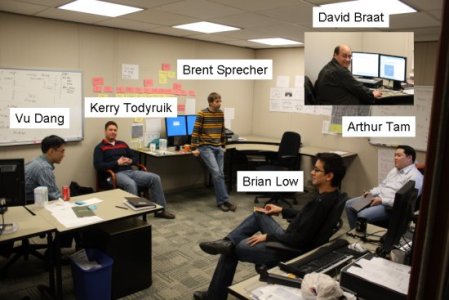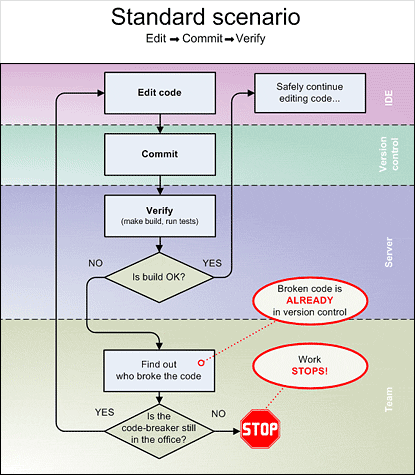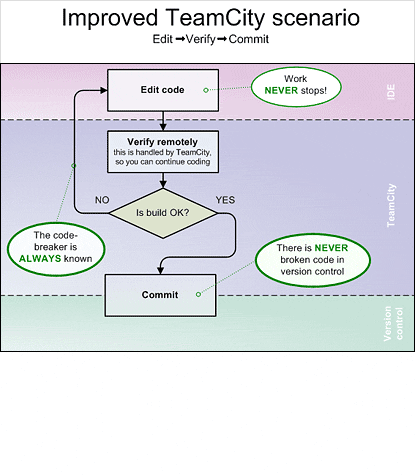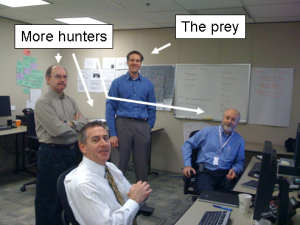Not all agile projects have the benefit of a full time customer, or dedicated QA resource. Yet without their feedback, we still expect our teams to produce bug free, easy to use software. The Bug Hunting party is a fun easy way to get more eyeballs on your application, and give you the feedback you crave. With three easy steps, I am going to show you how to turn a slow, boring Friday afternoon, into one of the greatest feedback sessions your project will ever get.
Not enough feedback
XP and Scrum make it very clear. The success of your project is directly proportional to the input you receive from your customer. Yet many projects can’t/won’t/don’t give development teams full time dedicated resources. The result is that despite the teams’ best efforts, and all our agile software engineering practices, we still somehow manage to find bugs, usability issues and other improvements that somehow evade us during development.
The Bug Hunt
To give your team the extra feedback boost you need to find these low hanging bugs and pieces of usability fruit, consider hosting your own Bug Hunting Party.
Bug hunts are fun, team building exercises, designed to find many of the little hidden bugs, and design usability gems lingering and trapped in your software.
You may not see them. You may even doubt they are there. But when you put your software in front of people, and ask them to use it, you’d be surprised at what they find.
My partner, Arthur Tam, and I just hosted our second bug hunting party this Friday. The results were amazing and there is no reason why you can’t host your own.
Here’s how we did ours.
Step 1. Invite the hunters
Invite as many people as you can. The more the merrier. For us, we pinged all the other developers in our department and dared them to try and bust up our system. The dare is an important part of the hunt. You want people to really try and bust your app, and offer lots of suggestions for improvement. So grease the wheels a bit and throw down a challenge.
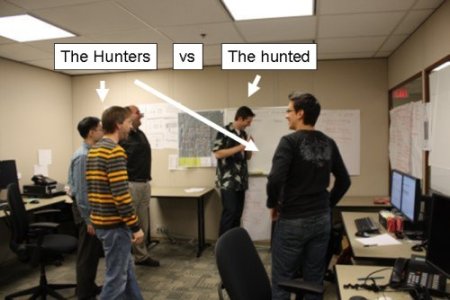
Step 2: Host the hunt
Arthur and I like hosting bug hunts on Friday afternoons. It’s down time for most people and they usually don’t seem to have anything better to do anyway.
Snacks are an essential part of any bug hunt. Pop, candy, chips, nuts, a vegetable platter, what ever floats your boat. People are giving up their time to improve your application, so the least you can do is make them feel appreciated by getting some snacks.

After demo’ing the application, and explaining the business, we go over the prizes. That’s right prizes. We want a bit of a competitive atmosphere and make the hunters know their efforts will be handsomely rewarded with giant chocolate bars.
Here are some of our favorite things to reward for:
- 1st bug found
- Most bugs found
- Deadliest bug found (most severe, the show stopper!)
- Best UI improvement suggestion
With the formalities over, we then grab our notebooks, and start the timer, and let the hunt begin!
What’s the first thing users do?
Where do they start?
Where do they they struggle?
Do they understand your error messages?
Is your validation right?
Did you forget to strip off empty spaces in all your text boxes?
One of the most important things to remember when conducting your bug hunt is to actively listen and not debate. When a user finds a bug, or offers a suggestion, don’t debate. Just write it down and listen. You’re not there to debate your design. You’re there to improve it, and these people are kindly offering you suggestions. It doesn’t mean you have to act on everything. Just thank them for the feedback and move on.
Step 3: Tally the kills
After 30 – 45 minutes invite everyone back and go over what was found.
Were there any areas of your application lacking?
What was good?
What was bad?
What was the number one improvement each hunter would like to see made to the application?
Give out the rewards and thank people for their time.
And congratulate yourself and your hunters on all the bugs you discovered!
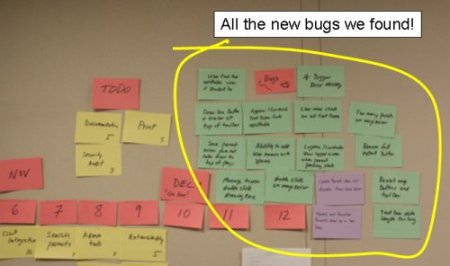
Conclusion
Don’t despair if you don’t feel you are getting enough feedback on your application. Create your own. You probably have friends, colleagues, and team mates all around who would love nothing more than to tell you why your kungfu is weak and how your application can be made a whole lot better.
So host your own bug hunt!
If your parties are at all like ours, you will discover a treasure trove of bugs, receive some amazingly insightful feedback, and your application will be a whole lot better for it.
All this, of course, delights customers.
A special thanks to all our big game hunters, and my partner Arthur Tam for use of his camera:
Arthur Tam
Brent Sprecher
Kerry Todyruik
Vu Dang
Brian Low
Umesh Rottoo
David Braat
